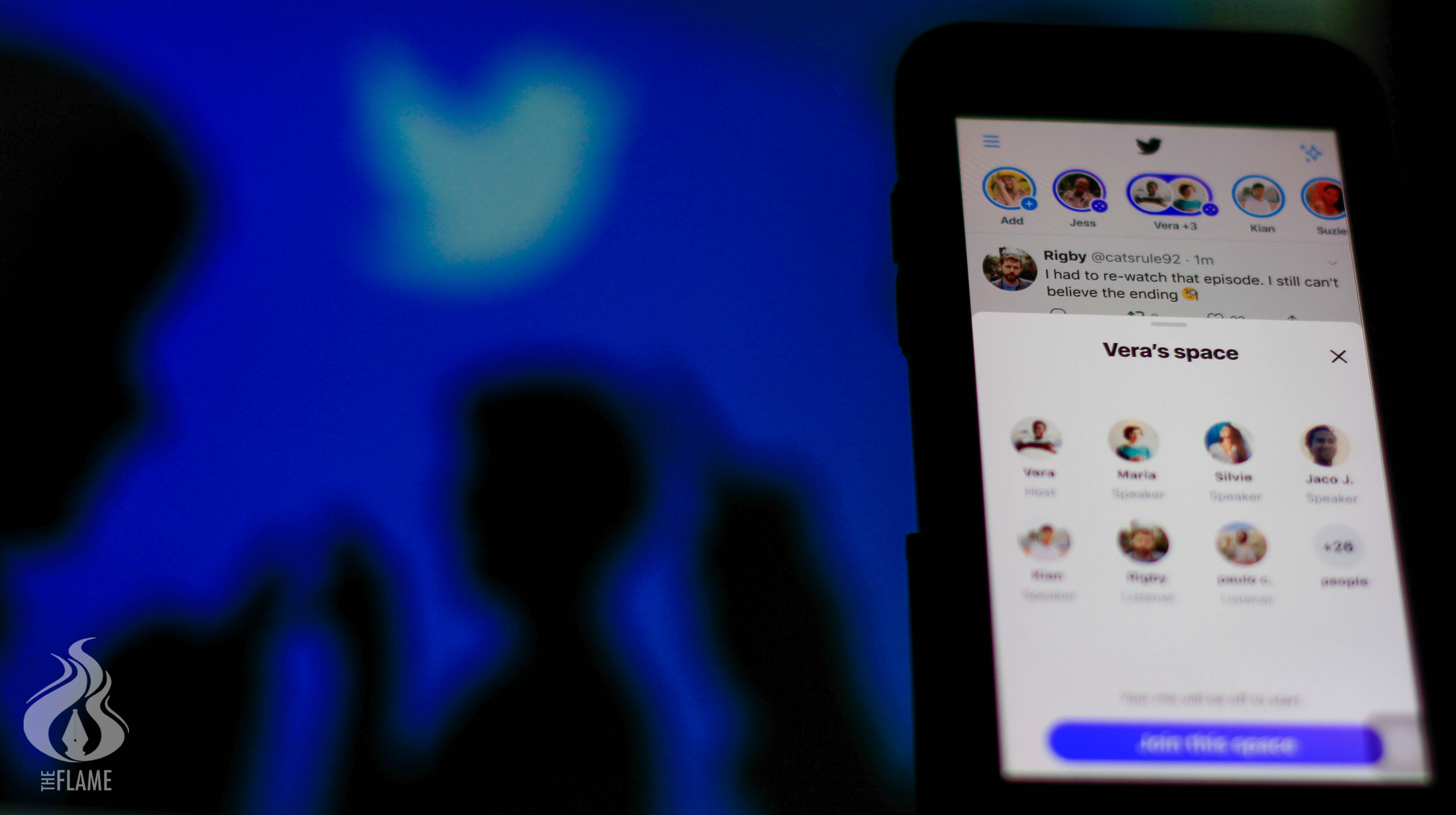
IF YOU are struggling during these trying times and you need an outlet to vent out your frustrations, this application might help.
Social media giant Twitter recently introduced Twitter Spaces, an audio-only feature where raw conversations, ranging from intellectual and casual discussions, take place.
According to Twitter, the feature brings a certain “authenticity, nuance, and depth only the human voice can bring.” Links are available publicly, allowing any user account to join as they please.
Users of the blue bird app can see ongoing spaces either through a purple bubble feature on top of one’s newsfeed or a purple border on a host’s Twitter icon.
One of the users of the feature is Mark Geronimo, a fourth year journalism student who launched a Twitter Space called #GabiTalks. His space allows people to talk about a myriad of issues, share entertaining stories and sing-along with other guest speakers.
“I actually talk about self-love, inuman stories, high school stories, lessons we can share to people. Kasi yung GabiTalks, we give advice to people,”
Geronimo said it is important that the space is “not scripted and pretentious.” When hosting conversations, he prefers to rely on his stock knowledge and the spontaneity of the live discussion.
But the feature is not limited to spaces dealing with mundane concerns. It is now being used by some groups as a medium for discussions on social issues, demonstrating social media’s ability to promote discourse.
Advocacies
One such group is the Foundation for Media Alternatives (FMA PH), which views Twitter Spaces an effective platform to advocate digital rights to the youth. The foundation focuses on digital rights and other societal issues related to information and communications technology.
“This [Twitter Spaces] is a safe space where people are open to hear other opinions. It’s important to foster these types of conversations,” Raf Magat, the communication officer of FMA PH, said.
Patricia Astudillo, an education student in the University of Santo Tomas, who actively engages in educational discussions, said the platform provided an opportunity to converse with other people during a pandemic.
“When this feature arrived, we were so desperate to find a platform where we could educate people,” she added.
Magat said the new feature of Twitter is all about “chikahan culture” or the practice of sharing stories and engaging in conversation. This “culture” could range from the most casual conversations to the most intellectual ones, and everything in between, he added.
“It works best if a Twitter thread and a session in spaces are simultaneously happening,” Magat said.
“People listen in Spaces while browsing their feed so it’s better if they can see visuals,” he added.
Since listeners are not allowed to speak without the approval of the moderator, Magat said the medium is more controlled and allows a smooth flow of conversation.
Another advantage of Spaces is it allows users to elaborate on their insights, unlike in tweets, which tend to be taken out of context, according to Bernice Soriano, project coordinator of FMA PH
“Sometimes, the creation of Twitter thread is not that concise,” Soriano told The Flame.
Micha Tumaru, a student from Far Eastern Unviersity who frequently listens to spaces, said there’s more in telling stories vocally.
- “Through speaking, there is vocal emphasis which allows us to influence, build connections, and motivate change than simply typing behind the screen [on Twitter],” Tumaru told The Flame.
Beyond conversations
Some Twitter Space users believe the feature can go beyond the sharing of ideas.
Just like Twitter hashtags, which have been used to call for action on important issues, Twitter Spaces is also seen as a potential means of stirring social movements that advocate change.
“It [Twitter Spaces] has the potential because it can be used for educational discussions and people can always just join, listen, and learn.” Tumaru said.
Astudillo is convinced that the feature can “ignite the consciousness of people.”
Magat shared a similar view, saying the application can be a form of social movement as long as there is a call to action and a desire to challenge the status quo.
But Henry De Vera, a third year philosophy student, believes the power of Twitter Spaces to form social movements is not enough because its audience is composed mainly of students and members of the middle class.
The real roots of activism, de Vera said, lies within the people who are not privileged to engage in the app.
Whether Twitter Spaces can promote change remains unclear. What is certain though is that the app allowed its users to create connections at a time of physical distancing and border closures.
“I feel like I’m just talking to someone, like a follower or a friend,” Geronimo said. — N. G. de Leon



